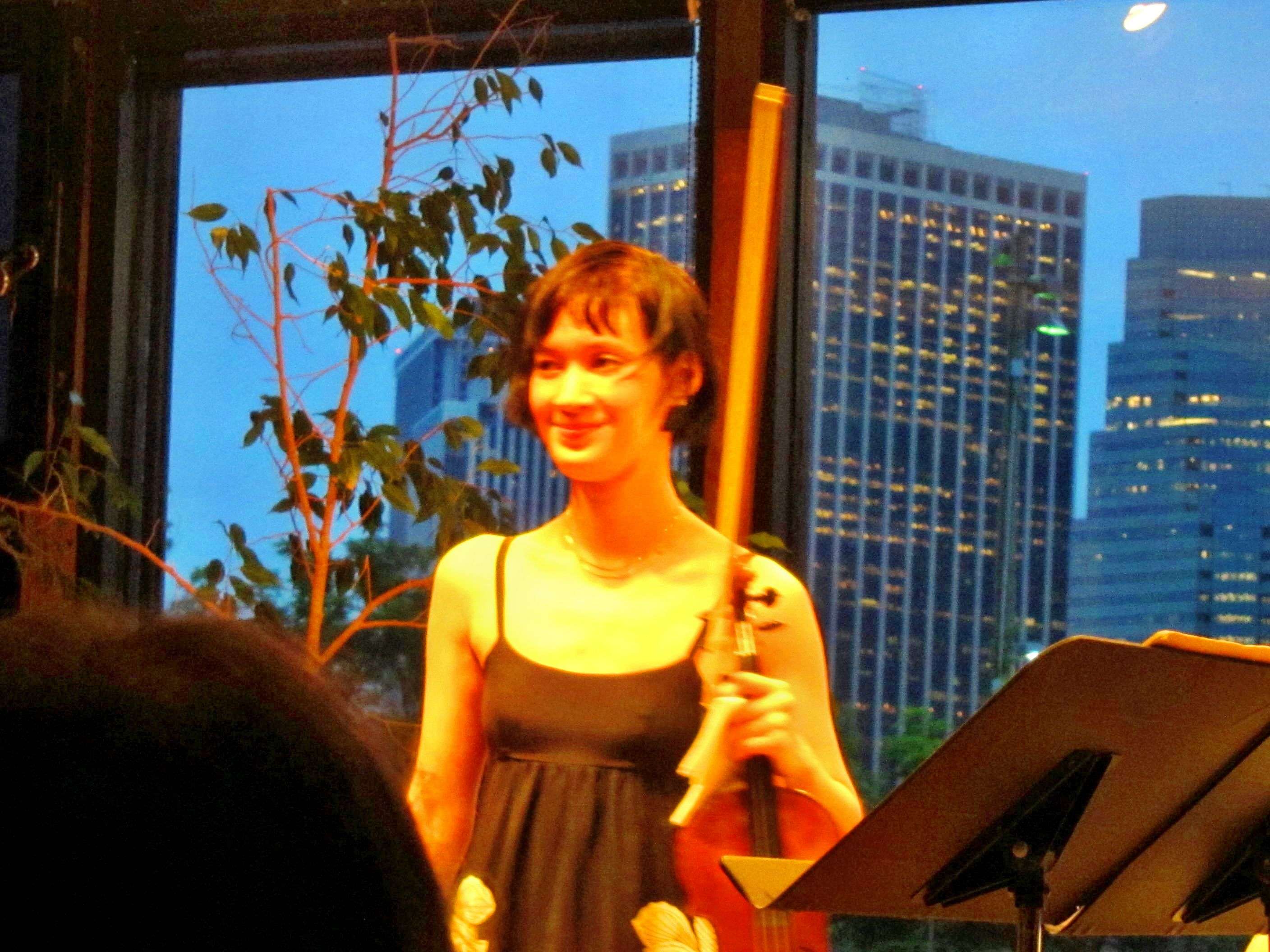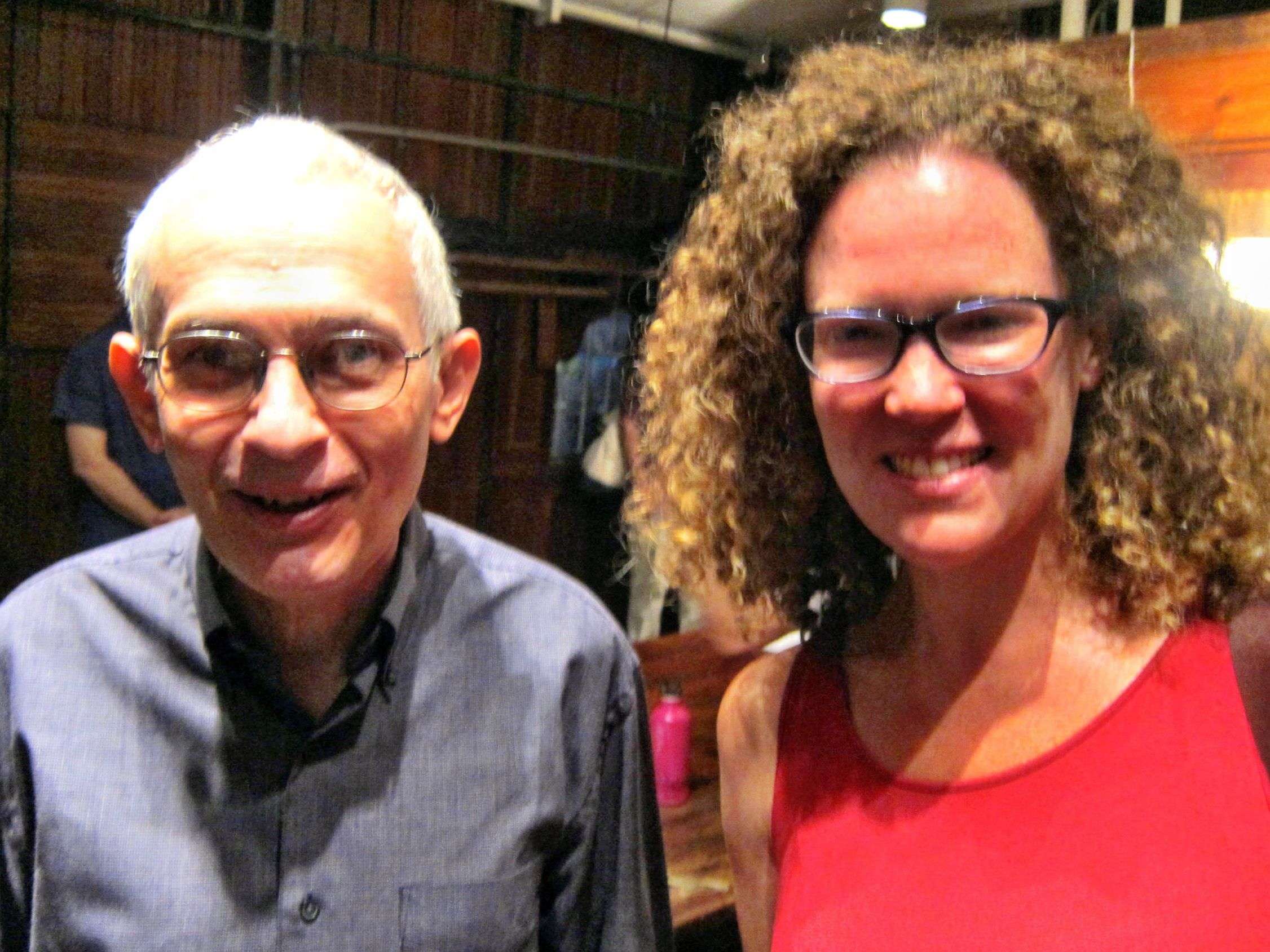|
Back
A Player From the Pantheon New York
BargeMusic, Old Fulton Street, Brooklyn
07/13/2012 -
Jeffrey Mumford: linear cycles vii (cambiamenti ii)
Kaija Saariaho: Nocturne
Oscar Bianchi: Semplice (US premiere)
Michael Hersch: Five Fragments (NY premiere)
Robert Cuckson: Rhapsody No. 1
Mika Pelo: Sprites (World premiere)
Anna Weesner: The Nearness of Things (World premiere)
Miranda Cuckson (Violin) 
M. Cuckson (© Coco T. Dawg)
Two non-surprises. First, that the week should begin and end with violinist Miranda Cuckson.
Last night was a solo revelation. But I heard her first on Tuesday evening at the Guggenheim Museum, where she vied with paintings by Pollack and an audience perambulating a quarter mile from where she was performing with a chamber orchestra. Neither appearance was surprising, because Ms. Cuckson is in the pantheon of performers who appear wherever daring music is played. Working with Elliott Carter, Henri Dutilleux, .John Adams and Georg Friedrich Haas, with recordings of composers Ralph Shapey, Donald Martino and Ross Lee Finney, Ms Cuckson is synonymous with the music of today.
The second non-surprise is that a recital of solo violin music from mainly unknown composers should be such an undaunting experience.
Had Ms. Cuckson sailed through these most difficult works, one might have drifted away, lulled by some easy four-string playing, childishly elementary double pizzicati against two melodies in minor seconds (as in Jeffrey Mumford’s linear cycles).
But Mr. Cuckson perhaps wanted us to listen to the challenges in this music No errors were made (so far as I could tell), but one knew that this was tough music, and it was played by a tough young violinist who was ready to excel.
Seven composers were heard in a program lasting little more than an hour But each one had a different idiom, each tested another facet of Ms. Cuckson’s brilliance, though some stood out. I was thinking particularly of Oscar Bianchi. His Semplice–obviously an ironic title for such a difficult work–gave a ravishing picture of violin playing. Like climbing any mountain, the beauty enveloped the BargeMusic room but Ms. Cuckson had to plunge though quarter-tonalities, ravishing echoing lines and manifold tricks.

R. Cuckson, A. Weesner (© Coco T. Dawg)
Two other works were stunning, The final piece by Anna Weesner was a full blown menu of styles, done with humor, spirit and élan. Her goal was a virtuosic “theatre piece”, where the violinist plays many roles. Thus, the fiddler is told to “play as if you’re playing Vivaldi” or “toss off casually like a country fiddler.”
This could have been a trick piece, but there was a wholeness, as the styles morphed from stylized square dance to scales piling upon scales, all without a moment’s stop.
Actually there were many (non-violin) stops. Working without a page-turner, Mr. Cuckson stopped each piece to turn the pages of the scores herself. It was difficult to know when the composer was offering movements or we simply had a physical disconnection, and it was sometimes literally dis-concerting.
Ms. Cuckson’s musical family is headed by her father, Robert Cuckson, whose Rhapsody was based on the pilgrimage to the church of St. James the Lesser in Basque country. I was happy he had mentioned the hymns, from the Syriac Church and a German pilgrimage song, as well as a harmonic work from the4 Codex Calixtinus of Compostela, for they were almost unidentifiable in this highly rhapsodic piece.
(That 13th Century Codex, by the way, includes not only music but rules for pilgrims–including my favorite: “Do not drink at any taverns run by Basque people, for they will cheat you.”)
I loved the idea of medieval inclusions, but the idiom was purely modern.
Amongst other works, Michael Hersch’s Five Fragments was exactly that. A quintet of works quickly and effectively fragmented. The only composer I knew, from her manifold performances in New York, was Kaija Saariaho, whose Nocturne was elegant, and custom made for the splendid playing of Ms. Cuckson.
Harry Rolnick
|